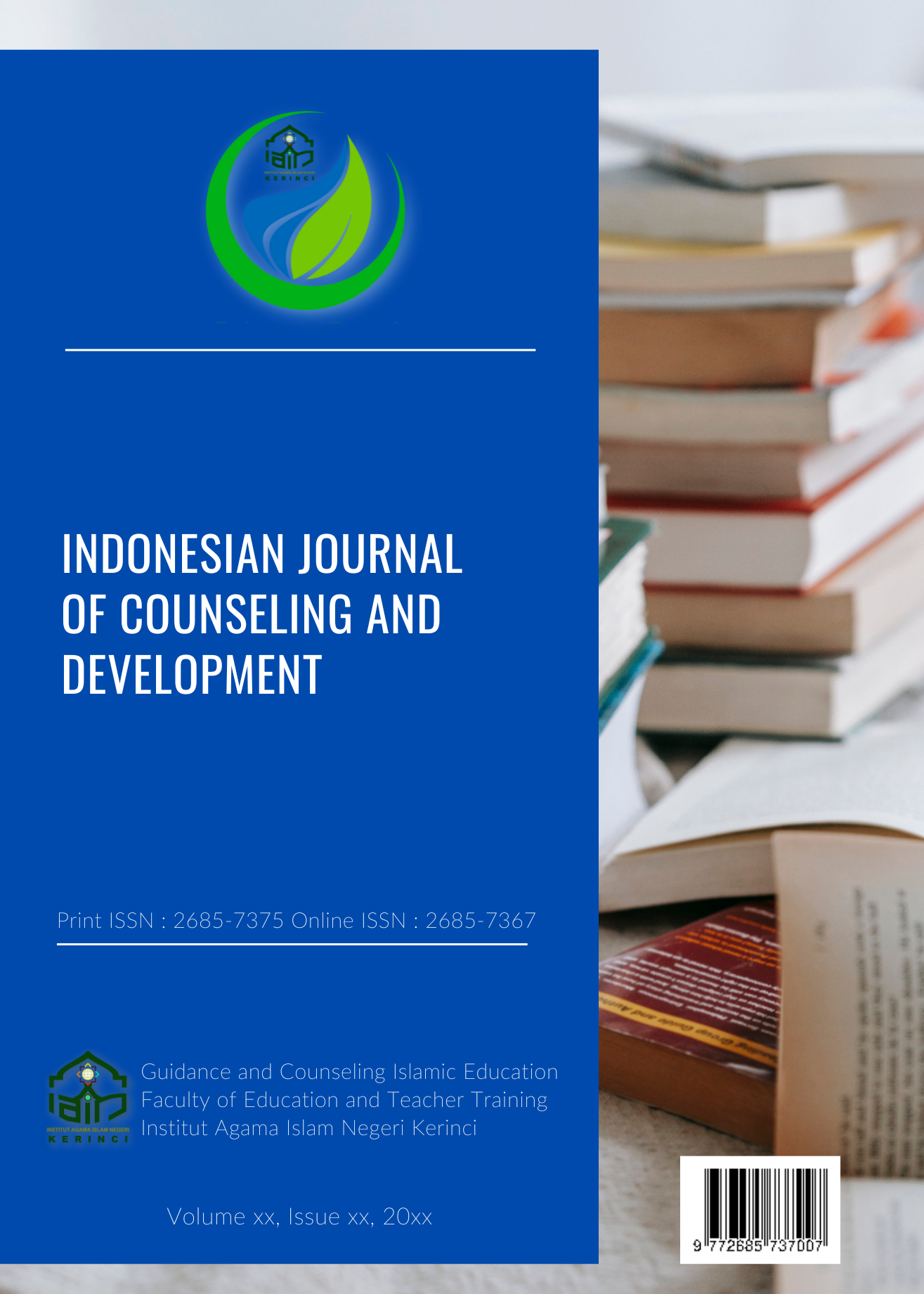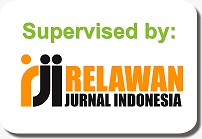Personil Sekolah yang Memberi Kenyamanan untuk “Curhat”
Abstract
Mental health problems in students require good support from all school personnel. However, not all students who have problems are comfortable talking to others about their problems. The purpose of this study is to describe school personnel who can make students feel comfortable to tell their story. Through this research, it is hoped that data can be obtained to serve as a basis for utilizing school personnel in providing guidance and counseling services. The study used a quantitative approach of descriptive survey type. The research sample was taken from 179 vocational school students in Yogyakarta City randomly. Data collection was conducted using an open-ended questionnaire to obtain who the school personnel were most comfortable talking to. Data analysis was done by calculating the percentage of the results of filling out the questionnaire. The results showed that the majority of students felt comfortable talking to friends, with teachers coming second and other school staff. The results of this study emphasize the chances of success of guidance and counseling services by utilizing peers, such as group-based services and peer facilitator services
Downloads
References
Aloia, L.S., McTigue, M., (2019). Buffering against sources of academic stress: the influence of supportive informational and emotional communication on psychological well-being. Commun. Res. Rep. 36(2), 126–135.
Aulia, T., Yandri, H., & Juliawati, D. (2023). Peer conformity in the" manis manja" community. KONSELI: Jurnal Bimbingan dan Konseling (E-Journal), 10(2), 183-190.
Bergin, A., Pakenham, K., (2015). Law student stress: Relationships between academic demands, social isolation, career pressure, study/life imbalance and adjustment outcomes in law students. Psychiatry Psychol. Law 22(3), 388–406.
Brechwald, W. A., & Prinstein, M. J. (2011). Beyond homophily: A decade of advances in understanding peer influence processes. Journal of Research on Adolescence, 21(1), 166–179.
Capuzzi, D., & Stauffer, M. D. (Eds.). (2016). Human growth and development across the lifespan: Applications for counselors. John Wiley & Sons, Inc..
Conley, D. T. (2012). A complete definition of college and career readiness. Educational Policy Improvement Center (NJ1).
Conway, C. C., Rancourt, D., Adelman, C. B., Burk, W. J., & Prinstein, M. J. (2011). Depression socialization within friendship groups at the transition to adolescence: The roles of gender and group centrality as moderators of peer influence. Journal of Abnormal Psychology, 120(4), 857–867.
Davis, K. (2012). Friendship 2.0: Adolescents' experiences of belonging and self- disclosure online. Journal of Adolescence, 35(6), 1527–1536.
Eccles, J. S., & Roeser, R. W. (2011). Schools as developmental contexts during adolescence. Journal of Research on Adolescence, 21(1), 225–241.
Elliott, R., Bohart, A. C., Watson, J. C., & Murphy, D. (2018). Therapist empathy and client outcome: An updated metaanalysis. Psychotherapy, 55(4), 399-410.
Gallagher, M., Prinstein, M.J., Simon, V., Spirito, A., (2014). Social anxiety symptoms and suicidal ideation in a clinical sample of early adolescents: examining loneliness and social support as longitudinal mediators. J. Abnorm. Child Psychol. 42(6), 871–883.
Giota, J., Gustafsson, J.E., (2020). Perceived academic demands, peer and teacher relationships, stress, anxiety and mental health: changes from grade 6 to 9 as a function of gender and cognitive ability. Scand. J. Educ. Res. 1–16.
Guyer, A. E., Choate, V. R., Pine, D. S., & Nelson, E. E. (2012). Neural circuitry underlying affective response to peer feedback in adolescence. Social Cognitive and Affective Neuroscience, 7(1), 81–92.
Hartanto, D., Fauziah, M., Azhari, I., Kusumaningtyas, D. A., & Rizal, Y. (2023). Do Guidance and Counseling Teacher Know About Students Mental Health Problems?: A Qualitative Study. KONSELI: Jurnal Bimbingan dan Konseling (E-Journal), 10(2), 171-182
Jacobs, E. E., Schimmel, C. J., Masson, R. L., & Harvill, R. L. (2015). Group counseling: Strategies and skills. Cengage learning.
Juster, F. T., Ono, H., & Stafford, F. P. (2004). Changing times of American youth: 1981–2003. Ann Arbor: University of Michigan.
Riset Kesehatan Dasar. (2018). Lembaga Penerbit Badan Penelitian dan Pengembangan Kesehatan. http://labdata.litbang.kemkes.go.id/images/download/laporan/RKD/2018/Laporan_Nasional_ RKD2018_FINAL.pdf
Mahmoodi, H., Nadrian, H., Javid, F., Ahmadi, G., Kasravi, R., Chavoshi, M., Golmohammadi, F., (2019). Factors associated with happiness among college students: do academic self-efficacy and stress predict happiness? Int. J. Happiness Dev. 5 (1), 14–24.
Malin, H., Reilly, T. S., Quinn, B., & Moran, S. (2014). Adolescent purpose development: Exploring empathy, discovering roles, shifting priorities, and creating pathways. Journal of Research on Adolescence, 24(1), 186–199.
Masten, C. L., Telzer, E. H., Fuligni, A. J., Lieberman, M. D., & Eisenberger, N. I. (2012). Time spent with friends in adolescence relates to less neural sensitivity to later peer rejection. Social Cognitive and Affective Neuroscience, 7(1), 106–114.
Myrick, R.D. (2011). Developmental guidance and counseling. Educational Media Corporation
NHS Digital. (2020). Mental health of children and young people in England, 2020: Wave 1 follow up to the 2017 survey. https://digital.nhs.uk/data-and-information/publications/statistical/mental-health-of-children-and-young-people-in- england/2020-wave-1-follow-up.
NHS Digital. (2018). Mental health of children and young people in England, https://digital.nhs.uk/data-and- information/publications/statistical/mental-health-of-children-and-young-people-in-england/2017/2017
Nonterah, C.W., Hahn, N.C., Utsey, S.O., Hook, J.N., Abrams, J.A., Hubbard, R.R., Opare- Henako, A., (2015). Fear of negative evaluation as a mediator of the relation between academic stress, anxiety and depression in a sample of Ghanaian college students. Psychol. Dev. Soc. 27 (1), 125–142.
Nussbaum, J. F., Lucas, A., & McManus, T. (2012). Educational contexts and intergroup communication. In H. Giles (Ed.), The handbook of intergroup communication (pp. 306–318). New York, NY: Taylor & Francis.
Råbu, M., & Moltu, C. (2021). People engaging each other: a dual-perspective study of interpersonal processes in useful therapy. Journal of Contemporary Psychotherapy, 51(1), 67-75.
Sartika, M., & Yandri, H. (2019). Pengaruh layanan bimbingan kelompok terhadap konformitas teman sebaya. Indonesian Journal of Counseling and Development, 1(1), 9-17.
Sadock, B. J., Sadock, V. A., & Ruiz, P. (Eds.) (2017). Kaplan and Sadock’s Comprehensive Textbook of Psychiatry (10th ed., Vol. 2). Philadelphia, IL: Wolters Kluwar.
Sharpley, C. F., Fairnie, E., Tabary-Collins, E., Bates, R., & Lee, P. (2000). The use of counsellor verbal response modes and client-perceived rapport. Counselling Psychology Quarterly, 13(1), 99-116.
Smith, A. R., Chein, J., & Steinberg, L. (2014). Peers increase adolescent risk taking even when the probabilities of negative outcomes are known. Developmental Psychology, 50(5), 1564–1568.
Solmi, M., Radua, J., Olivola, M., Croce, E., Soardo, L., Salazar de Pablo, G., Il Shin, J., Kirkbride, J. B., Jones, P., Kim, J. H., Kim, J. Y., Carvalho, A. F., Seeman, M. V., Correll, C. U., & Fusar-Poli, P. (2021). Age at onset of mental disorders worldwide: Large-scale meta-analysis of 192 epidemiological studies. Molecular Psychiatry, 1–15.
Yandri, H., & Juliawati, D. (2017). Burnout pada guru BK/Konselor sekolah. Konselor, 6(2), 61-65.
Yandri, H., Suhaili, N., & Ahmad, R. (2023). School Counselor Management in Handling Bullying Cases in Students. An-Nadwah, 29(1), 67-73.
Copyright (c) 2024 Mufied Fauziah, Moh. Farozin, Budi Astuti

This work is licensed under a Creative Commons Attribution 4.0 International License.








